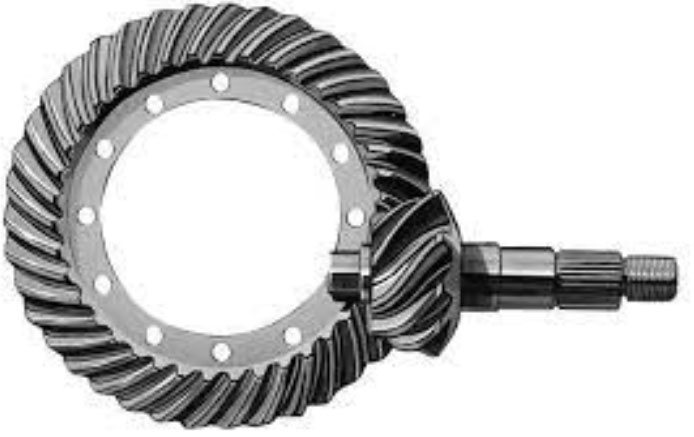
Hypoid gears are a type of gear system that combines the features of spiral bevel gears and worm gears. They have a unique design that allows the axes of the driving and driven shafts to intersect at an offset angle. Here is an overview of hypoid gears, their design characteristics, and their applications:
Design Characteristics:
- Offset Axes: Hypoid gears have offset axes, meaning the axes of the driving and driven shafts do not intersect. Instead, they intersect at a point that is typically below or above the gear centerline.
- Hyperboloidal Shape: The gear tooth surfaces of hypoid gears have a hyperboloidal shape, which is a combination of both helical and spiral bevel gears. This shape enables smooth and efficient gear meshing.
- High Gear Ratios: Hypoid gears can achieve high gear ratios due to their offset design. They are capable of transmitting high torque while maintaining compactness.
- Low Noise and Vibration: The offset axes and hyperboloidal tooth shape of hypoid gears help reduce noise and vibration compared to other gear types. The sliding action of the teeth results in smooth meshing and improved tooth contact.
- Axial Thrust: Hypoid gears generate an axial thrust force during operation due to the offset nature of their axes. This axial thrust needs to be carefully considered and properly managed in the design and application.
Applications:
- Automotive Industry: Hypoid gears are commonly used in automotive applications, particularly in rear-wheel drive and all-wheel drive systems. They are used in differentials to transfer torque between the engine and the rear wheels, providing power distribution and allowing smooth cornering.
- Power Transmission: Hypoid gears are also employed in various power transmission systems that require high torque capacity and compactness. They find applications in industrial machinery, agriculture equipment, mining machinery, and construction equipment.
- Heavy-Duty Applications: The unique design of hypoid gears makes them suitable for heavy-duty applications where high torque and efficiency are required. Examples include heavy-duty trucks, off-road vehicles, and industrial gearboxes.
- Robotics and Automation: Hypoid gears are utilized in robotics and automation systems that demand precise motion control and high torque transmission. They enable efficient power transfer in robotic arms, industrial robots, and other automated machinery.
- Household Appliances: Hypoid gears can be found in certain household appliances that require compactness, high torque, and low noise. They may be used in washing machines, food processors, mixers, and other similar devices.
It’s important to note that hypoid gears require specific design considerations, including proper lubrication, careful management of axial thrust, and precise manufacturing processes. The gear geometry and tooth contact require careful design and machining to ensure efficient power transmission and durability.
Overall, hypoid gears offer a combination of high torque capacity, compactness, low noise, and efficient power transmission, making them suitable for various applications, particularly in automotive, power transmission, and heavy-duty industries.
